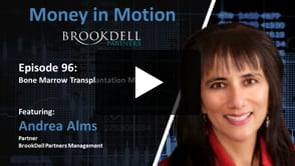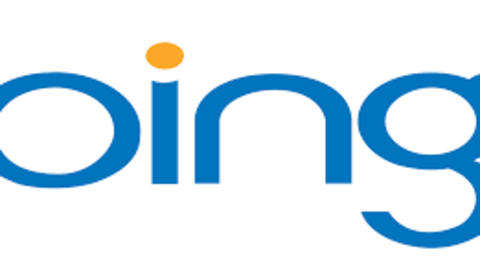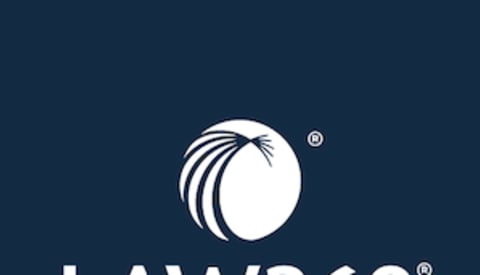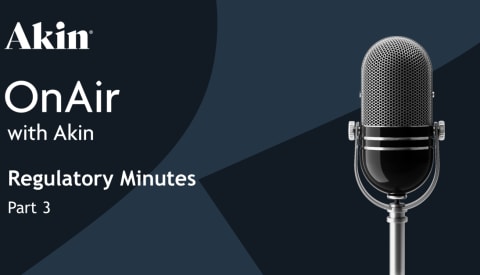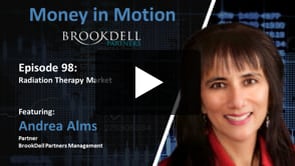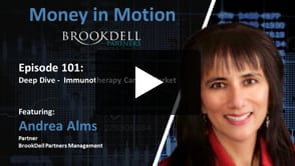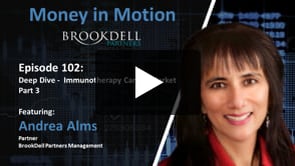Private Equity Dashboard:
Top Private Equity News, Member Posts, Managed Futures Daily Indices and more!
Hotel California no more – Secondary transactions and the rise of entry and exit routes in PE
Submitted 04/06/2020 - 2:31pm -By Michael Halford & Brian O’Neill, Goodwin – Until recently, an investor in a private equity fund could expect an investment to be tied up for at least 10 years. Historically and currently, private equity funds have a 10-year life with the option for the general partner (usually with some form of investor or advisory board consent) to extend the fund by two or three additional one-year periods. In practice however, private equity funds have lasted longer than this with a typical fund potentially lasting for 15 years or more before final wind up and liquidation.
This has meant that an investor wishing to exit before that time has been limited to secondary sales, in order to provide some degree of liquidity. The investment process across many sectors – private equity, venture capital, real estate, infrastructure and credit has generally been like a long journey on a road with no exits – possibly pleasant and maybe even delightful at the destination, but a long trip with few if any ways to check out completely and leave.
The secondaries industry has arisen and evolved with accelerating velocity in recent years, becoming more sophisticated with each economic cycle. During the most recent cycle, which has been abruptly and dramatically halted by COVID-19 and the downturn that the world and its markets are currently experiencing, record amounts of capital were raised for secondary investments of increasing variety and form, with over USD84.7 billion having been raised by secondary focused managers since 2018 (according to Preqin).
The industry, which started out with allowing/facilitating single LP interest sales almost exclusively (although sometimes in the context of team spin-outs), moved on to sales of portfolios of fund interests and has now developed into complicated and innovative transactions dealing with entire fund portfolios, selected assets or groups of assets. By not only providing capital to allow liquidity for investors at all stages of investments but also additional capital for the existing assets and potentially capital for new investments as well, the growing secondaries market in all its aspects has fundamentally transformed the historic private capital model in all major global markets.
Despite the current pandemic, the ascent of the secondaries market is a trend that has been continuing for some time, will carry on amid the pandemic to an extent and is likely to resume its upward trend as some version of normality returns. And as that happens, many of the techniques that have been developed by the secondaries industry in recent times may easily be applied to alternative investment funds of all kinds, and particularly private equity funds, over the coming period.
Indeed, with these techniques it is no longer the case that an investor invested in a private equity or other alternative investment fund or deal can “check out but never leave”. The hotel’s exits and entrances have been substantially unlocked by the evolving and robust secondaries market, for both buyers and sellers over the course of all investment cycles, albeit without the easy degree of liquidity that you see on the major public markets. In addition, the syndrome of the ‘zombie fund’ that we saw after the dot.com bubble burst in the early 2000s, where funds continued with underperforming investments that would never recover, but were charging management fees to investors who had in a sense ‘checked out’ of the funds but with no exit route.
If after this latest crisis we see similar investment performance and permanently impaired portfolios, then the secondaries market is likely to provide an exit route. In this article we seek to set out the primary techniques for achieving liquidity in the next phase of the investment cycle and explain how these techniques can be used in challenging times and beyond. We also discuss some of the important factors and practical considerations, gathered from long experience in this market, necessary to get transactions over the line.
Secondary transactions by their very nature are complicated and involve multiple parties and require advisers (legal and financial), with practical, legal and financial experience, as well as a well-honed, interdisciplinary and cross border set of skills needed to close deals. These skills are applied in four principal types of transactions for secondary liquidity events or parceling of undrawn commitments, addressed in sequence below.
Portfolio sales
While many started with sales of fund interests by one LP seller to one or more buyers, secondary transactions ultimately evolved into larger, more complex transactions that paved the way for GP-led transactions to develop. As dedicated secondary buyers emerged with the aim or buying interests in “mature” funds, investors who wanted to reduce their exposure to private funds or who needed liquidity to fund new investments, were able to package together and sell portfolios with large numbers of fund interests. These were typically investor-led transactions and often remain so when they occur, as they still do frequently. GPs of the underlying funds do however need to be involved to facilitate and in most cases approve the legal transfer of the fund interest, but the main commercial negotiations occur solely between buyer(s) and seller.
The global financial crisis of 2008 was a principal catalyst for many large secondary transactions involving private equity funds. They began early in the following decade as investors worldwide searched for cash or were required to reduce the size of their allocations to alternative assets given the precipitous drop in value of their public investments. In addition, the introduction of the Volcker Rule in the U.S. meant that certain banks needed to divest their private equity fund holdings and large secondary transactions provided the perfect opportunity, structure and market to do so.
While the global secondaries market for private equity investors has developed into the broader range of transaction types and liquidity/investment opportunities discussed below, this type of secondary transaction is still a huge part of the market and will have an important part to play in the months and years ahead.
GP-led secondaries
As discussed above, LPs often initiated secondary market transactions in the early years of the industry. More recently however, as the market has evolved, private equity general partners are frequently initiating and leading larger, more complicated transactions that offer existing investors the option to “check-out” of the fund (or one or more fund assets), remain in the relevant investment alongside a group of new secondary buyers, or a combination of both, again at the investors’ election. Examples of large PE managers who have led such transactions include Bridgepoint, Nordic Capital, Blackstone, ICG, Investcorp, TPG and Warburg Pincus.
The first step in a GP-led secondary is for the general partner to find a buyer or group of buyers, almost always with the assistance of a placement agent, who is willing to invest in the current (and potentially future) assets of the portfolio. The cash invested by the new investor(s) is used to buy out existing investors at, or around, the current net asset value of their interests. As noted, the alternative for existing investors is to roll their investments over into the new structure -- called a continuation fund -- alongside the secondary buyer(s) or in some cases simply to continue to hold the interests they have held without change. Rollovers into a continuation fund are sometimes but not always done on a tax deferred basis. GP fee levels for the ongoing fund are negotiable.
Other key negotiable items include terms of the asset sale, terms of the inter-owner relationships in the continuation fund, and (if applicable) requirements or choices to include co-investors and management teams who hold equity in the underlying portfolio companies outside of the legacy fund in the liquidity event. Notably, private equity transaction documents have not contemplated possible secondary transactions in areas such as tag-alongs, drag provisions and the like, but that is rapidly changing.
Proper handling of the inherent conflicts of interest is an essential feature of any GP led secondary. As the GP is essentially selling the assets of the fund to a new vehicle that it will manage, the potential for conflicts is obvious. The main issue that is potentially contentious is price, and that is often solved by procuring a third-party valuation, fairness opinions and consultation with advisory committees, as well as a competitive bid process with several potential secondary buyers.
Additional means of ameliorating conflicts include market testing of the transaction terms by the placement agent for the incoming investors (though the agent’s fee is typically paid by the manager) and careful and complete disclosure of the relevant conflicts in the LP solicitation and offering materials. Participants in GP led secondaries and especially GP sponsors need to be aware that the rise of these transactions is likely to be accompanied by increased regulatory scrutiny going forward, particularly by the SEC in the U.S. and mainly with respect to conflict issues.
Beyond potential legal issues and structural complexity, one of the principal challenges associated with GP led secondary transactions involves the transaction process itself. Many parties are involved in a GP led secondary, including all current owners and all prospective investors. The transaction involves a tender offer, a fund formation, and an M&A deal all in one. A new structure, with terms agreed among multiple parties, must be established to facilitate the buyers’ investments, and either the relevant assets need to be sold to this new vehicle or the fund interests of the selling LPs need to be purchased.
Negotiating with both buyers and sellers can be a difficult balancing act, and momentum must be created to drive the transaction forward. Legal and commercial advisers who have deep experience with both the “funds” and “deals” issues that arise and the range of “market” resolutions of these issues is essential, as is setting strict but manageable deadlines to keep the transactions going and ensure they get over the line. Most of these transactions will be a win for all parties involved, but the main risk is that the deals will fail to complete if they are not actively and efficiently managed.
As these transactions require a secondary buyer or buyers in order to work, the underlying assets clearly must be an attractive proposition. All fund managers and their investors will, at the current time, be concerned about valuations and the impact COVID-19 will have on the value of their portfolios. That is not to say that these types of transactions can only be successful when times are good. Secondary buyers will be attracted by lower pricing for assets that over time offer interesting prospects, and while values may have dropped from 2019 levels, LPs who are concerned about liquidity or are now overexposed to alternative assets may still find the offers acceptable.
Transfer/parceling of undrawn commitments
Most secondary transactions involve the selling investors disposing of their entire interests, in terms of both the drawn/invested element and the undrawn capital. Even if an investor sells a percentage of its interest, it will be a percentage of both the drawn and the undrawn elements. The buyer therefore becomes the owner of the existing assets of the fund and takes on the obligations to fund capital calls to make new investments.
There is an alternative strategy which involves the existing investors retaining their interests in the current assets of a fund, while transferring their obligations to make future contributions to the new investor or investors. For the secondary buyer, a fund that has started to invest just prior to a downturn may not be attractive due to the assets currently in the portfolio. However, if the buyer believes the fund manager can deliver attractive returns going forward, then the chance to invest in future assets only could be of real interest.
The structuring of such a transaction would not be as straightforward as a buyer purchasing several fund interests from selling investors and would usually require significant time and attention from the GP. Pricing/valuations are not an issue as the buyer is merely purchasing the obligation to fund future calls, so conflicts of interest are not an issue as they would be with a typical GP-led secondary. To implement this investment structure, a feeder vehicle is set up and the selling investors transfer their interests to it in return for an interest in the feeder vehicle. The secondary buyer would also invest through this feeder vehicle, which would effectively split the underlying fund interests.
While not a complete exit for the existing investors, this secondary transaction variant gives them the chance to dispose of some or all of their obligations to fund future drawdowns at a time when many will have liquidity concerns. In addition, the existing investors avoid selling their indirect interests in current assets at potentially a deep discount, and with time the valuations may recover.
Preferred equity transactions
Preferred equity transactions are perhaps less well known, and until very recently have received less coverage than the GP-led secondaries discussed above. However, these transactions have been growing significantly in the last five years and offer a very interesting proposition to both fund managers and their investors. Preferred equity is of course a class of equity funding that sits between debt and equity. It is not debt, so generally it does not carry with it the debt service and amortisation requirements that debt or at least senior debt typically carries, nor will preferred equity issued in the secondary market typically have covenants and other tests attached.
It will rank ahead of the “normal” equity – in this case the interests of the existing fund investors - but the injection of additional capital may be extremely welcome to those investors. Although the preferred equity provider will be paid out first, the existing investors remain in the fund and can still benefit from the upside of the current investments. Preferred equity structures may be a stand-alone transaction, or it could be incorporated into one of the transactions discussed above – for example, with the secondary buyer in a GP-led transaction having a preferred equity stake in the continuation vehicle.
For investors who need some form of liquidity, but at the same time don’t want to sell their interests, the addition of preferred equity provides the perfect solution. For the managers, it could also provide additional capital for follow-on investments at a time when potential concerns about drawing down capital from their investors would otherwise make the follow-on investments difficult or impossible to pursue.
In addition, and while there are complexities to preferred equity solutions, they are usually more straightforward transactions than GP-led secondaries. A big risk of GP-led secondaries is the execution risk, but a secondary transaction involving preferred equity can be a much simpler structure with no new vehicles required. Conflicts of interest are also not as prevalent in a transaction involving preferred equity as with GP-led secondary sales, as no assets are sold or transferred.
Existing investors will still need to be brought on board however, so investor/advisory board communication remains a key part of the strategy. The spate of successful preferred equity transactions in the market, coupled with the existence of several big players in the market with dry powder for such investments, may combine to generate many more of these transactions in the short term, in a time of uncertain valuations.
The increasing variety of secondary transactions means that there are a number of options for general partners looking to provide additional liquidity for investors, and for investors seeking to gain access to alternatives across asset classes and geographic boundaries. That is not to say that the problem of zombie funds (where investors have mentally ‘checked-out’ of a portfolio that will never recover) has been completely solved by the use of secondary structures.
This new cycle that we are entering will be a true test of whether the ‘Hotel California’ problem has now truly been solved. It is clear however that one or more (or a combination of all these techniques) will likely be used with increasing frequency to give liquidity options to general partners and institutional investors. This in turn will give confidence to investors making primary commitments to new funds that they will likely have opportunities, that they did not historically have, to “check out and leave” before the fund is liquidated thanks to our vibrant secondaries industry.
Author Profile Tags Deals & Transactions Funds Private EquityToday's Private Equity Headlines:
Access Over 250K+ Industry Headlines, Posts and Updates
Join AlphaMaven
The Premier Alternative Investment
Research and Due Diligence Platform for Investors
Free Membership for Qualified Investors and Industry Participants
- Easily Customize Content to Match Your Investment Preferences
- Breaking News 24/7/365
- Daily Newsletter & Indices
- Alternative Investment Listings & LeaderBoards
- Industry Research, Due Diligence, Videos, Webinars, Events, Press Releases, Market Commentary, Newsletters, Fact Sheets, Presentations, Investment Mandates, Video PitchBooks & More!
- Company Directory
- Contact Directory
- Member Posts & Publications
- Alpha University Video Series to Expand Investor Knowledge
- AUM Accelerator Program (designed for investment managers)
- Over 450K+ Industry Headlines, Posts and Updates
